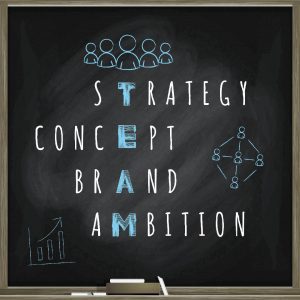February 24, 2020 |

An effective talent acquisition strategy helps you stand out from everyone else clamoring for top talent. Companies that project their needs in advance and proactively scout the best talent are better positioned than companies that react to unanticipated needs and are unprepared for market challenges.
Building an effective talent acquisition strategy isn’t easy and can’t be implemented just once. After all, a good strategy is a process that’s always in flux to match the demands of the market. An effective talent acquisition strategy has many facets and variables, regardless of the size or scope of the business.
What Is Talent Acquisition?
Talent acquisition is a long-term strategic effort to seek out qualified candidates, cultivate relationships, and ultimately convince those candidates to bring their skills and expertise to your company.
Talent Acquisition vs. Recruiting
There’s a common misconception that talent acquisition and recruitment are the same things – they are not and shouldn’t be confused. Talent acquisition focuses on long-term human resources planning and finding appropriate candidates for positions requiring a very specific skill set to help meet business goals and objectives.
Recruitment is a short-term, tactical process focused on filling a specific position or positions in order to address immediate needs. Both play important parts in the human resources process, but they are very different in terms of process design, time frames, and objectives.
In What Instances Would A Talent Acquisition Strategy Plan Be Of Most Value?
Time passes and the mass Boomer Generation exodus from the workforce has begun. It’s been estimated that as of two years ago, 33% of the workforce, including 48% of supervisors, are or will shortly be eligible to retire. Those statistics really underscore how vital talent acquisition is becoming. Generation X and Millennials are the workers and future business leaders who will be in high demand, and effective talent acquisition strategies recognize the changing nature of the workforce and the marketplace.
Here are segments where talent acquisition strategies are of particular value:
Niche Markets
Certain niche industries like technology, medicine, law, or financial management need a talent acquisition strategy to attract top talent with specific skills.
Competitive Industries
The more competition there is for top talent – and the more compensation and benefits other companies are offering – the more important the talent acquisition strategy becomes.
Fast-Growing Companies
A company that is growing faster than normal should use a forward-thinking talent strategy to reduce time-to-fill as much as possible.
Executive/Leadership Roles
A talent acquisition strategy helps with executive succession planning and helps draw in leadership for complex markets, products, industries, or business areas.
Benefits Of An Effective Talent Acquisition Strategy
Talent acquisition is more than selecting a candidate from a pool of interviewees or a pile of unsolicited resumes. Talent acquisition is the process of seeking out the most qualified individuals, assessing their skills, determining where they would best fit in your organization, and ultimately convincing them to join your company.
An effective talent acquisition strategy has many benefits, including creating a competitive advantage, adding value to the business, and positioning it for long-term success.
It is not an overnight process. It’s a long, slow build, but the payback can be substantial.
In its study, Talent Acquisition –Adapt your Strategy or Fail, the Aberdeen Group provides detailed information on the business necessity of talent acquisition. The rewards for the companies that get it ‘right’ are significant. Companies achieving ‘Best-in-Class Performance for Talent Acquisition’ experience, on average, 94% retention rate of first-year employees, 80% of employees receiving rankings of ‘exceeds performance’, and a 15% year-over-year improvement in hiring manager satisfaction.
Here are four ways an effective talent acquisition strategy provides benefits:
Reduces Cost
A talent acquisition strategy is one way to reduce a company’s financial risk during the hiring process. Recruiting to fill a job vacancy often takes a lot of time and resources. It can be expensive when the costs for job advertisements, resources in HR and management for the application process and interviews are taken into account. A talent acquisition strategy minimizes the risk of hiring the wrong person and then having to restart the process.
Reduces Time
Rather than having to initiate searches when unexpected needs arise, a talent acquisition strategy provides the means for an immediate response.
Increases Quality
By aligning long-term staff planning with business strategy, a talent acquisition strategy provides a framework for identifying the best candidates for your needs and eliminates candidates who aren’t suitable.
Increases Quantity
Because talent acquisition is an ongoing process, it builds a storehouse of already vetted, qualified candidates. Best-in-Class strategies usually include efforts to identify and cultivate ‘passive candidates’ (i.e., currently employed and not looking for new employment) because those individuals possess skill sets and expertise that could be immediately transferable to your organization.
How To Build An Effective Talent Acquisition Strategy
Developing a talent acquisition strategy is complicated. It takes on many forms based on an organization’s culture, industry, location, business needs, and readily available talent.
Clearly Define Your Ideal Candidate
What are your needs and what are the employee skill sets you are seeking? Once you have defined your talent acquisition strategy, point out the areas where you need help, or you need fresh ideas. If you need help with employer branding and putting your best foot forward, set up regular meetings with your marketing team. If you need help analyzing data, set up meetings with a data guru.
Assess Current Hiring Process
An effective talent acquisition strategy always begins with an overall analysis of HR. Whether HR functions are performed in-house or are outsourced, effective talent acquisition relies on HR functions that are aligned to the overall business strategy.
Examine the hiring process that is currently in place. Create new ways to augment those practices. An often overlooked, and underutilized source of information is your staff. In many cases, insight can be provided by the type of people you’re looking to hire. For example, if your talent acquisition strategy has the objective of hiring a top-tier electrical engineer, you should initiate conversations with high-performing electrical engineers you currently employ to understand what attracted them to your company and why they enjoy their jobs.
When you understand what your current high performers look for in their role, you are in a better position to offer targeted, high performing candidates what they really want.
Align Goals With Human Resources
Simply put, HR must recognize, define, and communicate the value of talent acquisition to all stakeholders, including current employees and potential candidates.
A complete understanding of the business and business strategy is essential. Many HR departments, however, are busy with day-to-day emergencies and communication with the business’s executives is limited. It’s therefore essential that company executives communicate the overall business objectives with the goals of the talent acquisition strategy. Then the HR function can incorporate that communication into its procedures and standards.
Using Data Analytics To Improve Talent Acquisition
Effective talent acquisition relies on data-driven decisions throughout the process to determine how and why someone will be a good fit.
The use of data in HR is growing daily, and new tools are moving to measure long-term metrics like performance, retention, and overall fit. Armed with that data, HR professionals can predict future success at the company based on the qualities of past high performers – which adds insight and clarity to talent acquisition efforts.
Conduct Workforce Planning
Strategic workforce planning involves making sure your organization has the right people in the right place at the right time. Having this documented helps your team examine the gaps in your present workforce and determine what your needs will be in the future.
The Process Broken Down
Workforce planning can be done in five fairly simple steps. This includes setting a strategic plan, analyzing your current workforce profile, developing an action plan, implementing the action plan and monitoring, evaluating and revising your plan as needed.
Supply Analysis
Conducting supply analysis involves understanding the current workforce and how it is projected to change over time.
Demand Analysis
Conducting a demand analysis involves understanding your organization’s current and future workforce requirements.
Gap Analysis
This phase involves understanding the gaps between workforce demand and supply and defining the top priority gaps that will have the greatest impact on the organization’s performance.
Solution Analysis
This stage involves coming up with the appropriate activities to close the identified workforce gaps and enabling your organization to meet its strategic goals.
Collaborating With Multiple Departments To Leverage Ideas
Collecting input from across your organization is vital because effective talent acquisition can never occur in a vacuum. For example, your marketing function could contribute by producing more engaging, focused print and digital recruiting materials that clarify your ‘brand’, increase market awareness and attract more candidates.
You can also work with accounting, analytics, or other data-focused departments to help you analyze your new trove of data. Work with them to understand how to pull actionable insights from your recruiting data.
Focus On Employer Branding
Your employer brand is the face of your company. It is what candidates believe to be true of you as an employer and it underpins the outcome of your talent acquisition strategy. You need to build an employer brand that is unique and true to your organization. If your brand doesn’t stand out, it is much more challenging to attract the talent you want and need.
Key Concepts
Your employer brand should focus on your employees and ensure a positive candidate experience. An employee-centric culture also inspires your employees to refer other candidates to your business. You should determine who your ideal candidate is and invest in programs that meet their expectations. Start with surveying your current employees and draw from their experience. Encourage your employees to share their stories and experiences.
Nurture And Invest In Candidates
A candidate nurturing strategy relies on platforms such as email, advertising, text messaging and career pages to engage passive talent from the point of the first contact until the on-boarding of a new employee. Think of this similar to the way you nurture new leads for sales prospects. Both are equally important.
Effective Onboarding Program
Your talent acquisition strategy shouldn’t stop once you make a hiring decision. The onboarding process is also an important part of your overall program. Having an efficient and effective onboarding process can start the candidate’s employment off on the right foot and set them up for success which only further helps you in retaining and recruiting additional talent.
Methods Of External Recruiting
With all the changes in technology, there are more and more resources available for recruiting talent. Job boards and social media are two of the fastest-growing resources available to businesses. If you are a large business that is always recruiting, having your own job board that is hosted on your site is hugely helpful. Almost all businesses benefit from using recruiting or staffing agencies to assist with their recruiting efforts. Staffing agencies handle talent acquisition all day every day and they are experts at bringing top talent to your business.
Your Talent Acquisition Strategy Will Shape The Future Of Your Workforce
Few things are more important to your business than the workforce you employ. Your business is only as good as your people. Because of this, your talent acquisition strategy should be central to your business strategy and growth. The success of that talent acquisition strategy will determine the success of your business’s growth and be the determining factor in what your workforce looks like. If your strategy focuses on hiring for growth and longevity, that is what it will produce. At the same time, if you don’t put the time into building your strategy and hire more out of desperation, you will likely end up with high turnover and unsatisfied employees who don’t connect with your employer brand.
Make a great first impression at your next job interview.
BROWSE OUR JOB BOARD TODAY!
This blog post is intended for informational purposes only and does not constitute legal advice. No attorney-client relationship is created between the author and reader of this blog post, and its content should not be relied upon as legal advice. Readers are urged to consult legal counsel when seeking legal advice.








